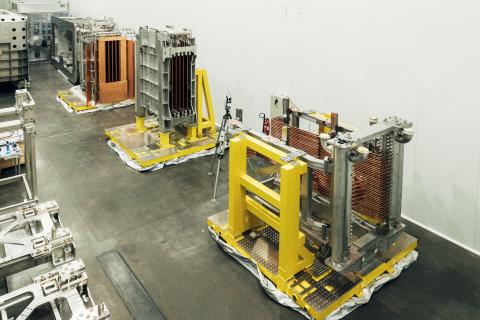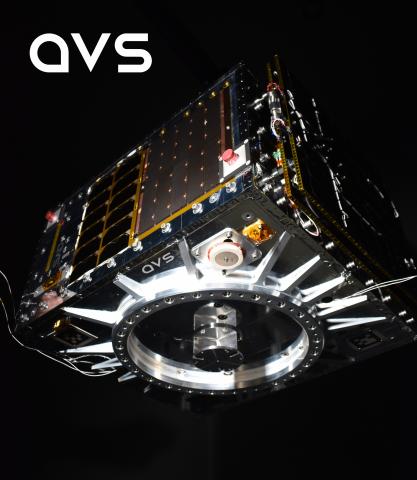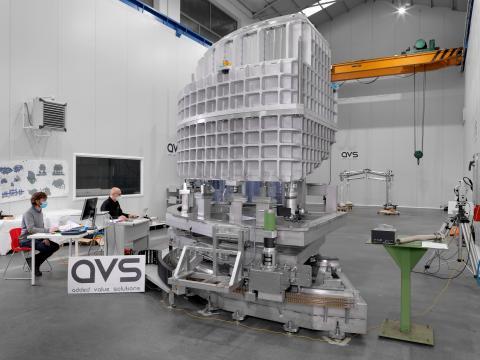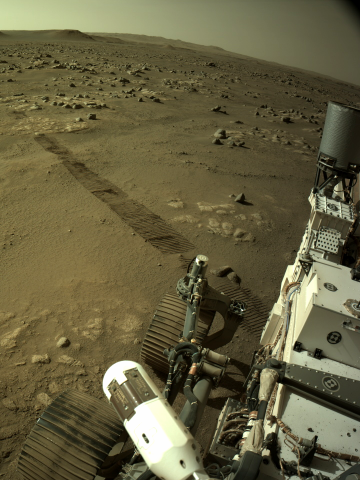




General information
-
Company nameAVS
-
AddressPol. Ind. Sigma, c/Xixilion 2 bajo, Pab. 10; 20870 Elgoibar
-
Turnover25.00 million EUR in year 2023
-
Employees160 in year 2023
-
SMEYES
-
Contact Info:
-
Phone+34943821841
-
Emailavs@a-v-s.es
Activity and Skills
AVS is a technological SME, which aims to provide technology-based solutions to innovative and challenging projects. Strongly focused on the development of outstanding devices and instruments, our expertise covers all the steps across the design, manufacturing, assembly, test and delivery under ISO 9001 EN 9100. AVS conceives very demanding instruments performing in harsh environments: radiation, UHV, high magnetic fields and cryogenics fields of Particle Accelerators, Nuclear Fusion, Astrophysics and Space.
AVS´ experience in project development for large-scale facilities (RAL-ISIS, ILL, ESRF, ESA, IAC, CERN, ILL, HZB, FAIR, ITER, F4E, etc.) serves as a qualified reference for future projects. AVS’ solutions certainly benefit from the cross experiences between such fields, adding value to our developments.
In fusion, main projects include manufacturing of MITICA beamline components, manufacturing design for ITER diagnostic systems (CTS, RNC, WAVS, bolometers, CXRS, DPGs), instrumentation and prototypes for ITER (OVSS sensors, Junction boxes, FOCS, coils, clamps, diagnostics magnetic sensors platforms....).
In the accelerator field AVS has been recently awarded with the design and development of an accelerator injector for hadron-therapy.
Regarding the Space area, we have just launched the LUR-1 mission, which was launched aboard SpaceX's Falcon 9 rocket. LUR-1 was conceived as a 57-kilogram microsatellite, the first of the LUR platform family, incorporating antennas of various bands (UHF, S, and X) and a deployable arm for the solar panels. Additionally, it is equipped with a multispectral camera with seven bands in the visible and near-infrared spectrum, featuring a GSD (Ground Sample Distance) resolution of 1.5m, as well as a Quantum Key Distribution (QKD) communications experiment, developed entirely by AVS. The LUR satellite is equipped with the MICE device, a device that will be installed on all satellites of the Copernicus program to prepare them for deorbiting in the event they cease to function or at the end of their operational life. ESA is promoting the development of such technologies as part of its "Zero Debris 2030" program. This makes LUR-1 the first European satellite to put this technology into orbit. At the end of LUR-1's operational life, it will become a possible target for ESA’s future CAT IOD mission, where the possibility of removing space debris will be demonstrated to achieve a more sustainable space environment.
AVS is solidifying its position as a provider of satellite platforms and complete missions. While up until now, the company had worked as a supplier of critical systems or components for major space missions, with the launch of LUR-1 it has managed to lead an entire mission. In other words, AVS now conceives the project, manufactures it, tests it, and once launched into space, it also controls it from Earth, receives the satellite's data, and processes it. With full merit, AVS is now one of the major players in the so-called New Space sector, standing alongside projects driven by NASA and the European Space Agency.